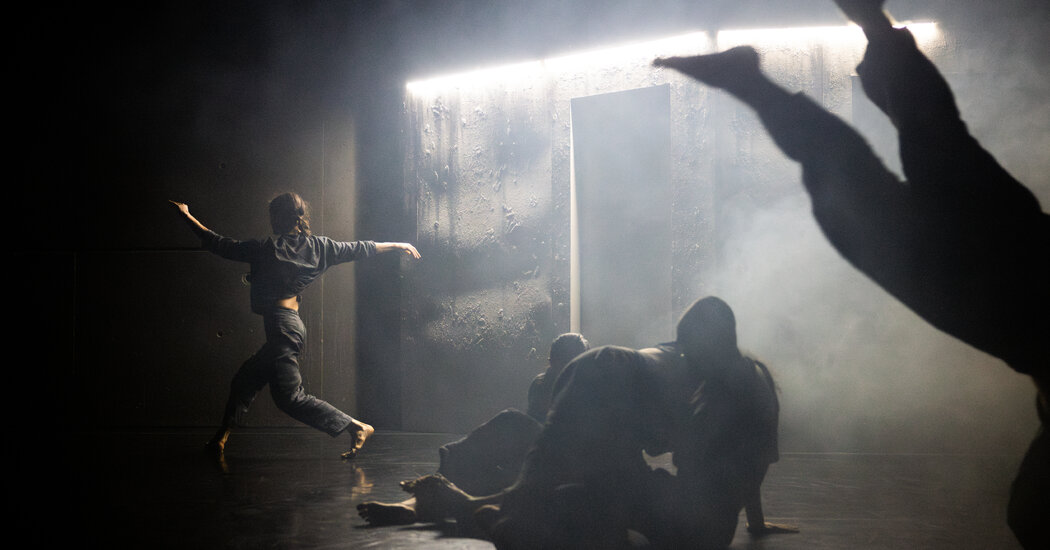What has one voice but four legs in the morning, two legs at noon and three legs in the evening? So goes the riddle of the Sphinx, and the answer, as Oedipus discerned, is man: crawling as an infant, bipedal as an adult, walking with a cane in old age.
“4|2|3,” a work by the choreographic duo Baye & Asa that had its premiere at the Baryshnikov Arts Center on Thursday, takes its theme and structure from that riddle. It comes in three parts, the first performed by children, the second by young adults and the last by the veteran dancer Janet Charleston (who doesn’t need a cane).
The setting is industrial and vaguely postapocalyptic. At the rear of the stage stands part of a building that looks like it is made of concrete (scenic design by Soren Kodak). It has a door in it and a rectangular aperture like a window without glass. A cylindrical chute juts out from a wall horizontally on supports.
The ambient soundscape, by the cellist and composer Mizu, is industrial, too, with assaultive waves of rumbling, buzzing, hissing and screeching. But it’s organic in shape, and within the layers of electronics and processing, the scraping and singing cello is a voice in the wilderness.
The children (Leora Champagne, Kristen Lieng and Sasha Lecoq, all excellent) aren’t infants, but they do trade off doing a monkey walk on all fours. Much of their choreography has the form of children’s games like Ring Around the Rosie, and they treat the grim setting as a playground. Sometimes, they look warily at the door and window, and as their play turns more aggressive, they throw one another to the ground and drag the floored child by the feet. As the lights go down, something worse may be about to happen.
At the start of the middle section, the chute bellows smoke. The five adult dancers echo some of the children’s movement, but now everything is more violent and faster, as they yank one another around in weaving patterns. They look at the window and door, portentously, but when the door finally opens, it’s oddly inconsequential: The dancers go in and they come out.
Eventually, one (the imposing Nick Daley) stands on top of the chute, becoming a twitchy demagogue while the others sit as if gathering for story time. Then they all move in a clump like a zombie army, and the ending of the first section returns with more menace.
Through all this, the weaving patterns are intricate and many-leveled, the lithe dancers often dividing into configurations of two and three. The bursts of speed are startling, and when a beat kicks in, unison motion has a feral force. But the rhythm of freeze and explode grows monotonous, and the dancers’ evil grins during the zombie-army bit are as ridiculous as when the smoking chute starts to glow.
Much of the work’s drama comes from Serena Wong’s precise lighting, which continually shifts angles, brightening and darkening different areas of the stage. The drama, though, promises more than it delivers. The message seems to be a rote version of “everything falls apart.”
Charleston brings dignity and gravitas to the final section, repeating earlier motions in a more thoughtful key, perhaps remembering what happened. Her presence, along with that of the children, supplies some automatic poignancy, and as in recent work by Kimberly Bartosik, the kids and the glowing menace have a “Stranger Things” vibe, without the fun and charm.
What’s behind the door? What’s in the chute? Does the glow suggest a supernatural explanation for the dark side of man? This sphinx-like work doesn’t make those questions very engaging.
4|2|3
Through Saturday at Baryshnikov Arts Center; baryshnikovarts.org.


